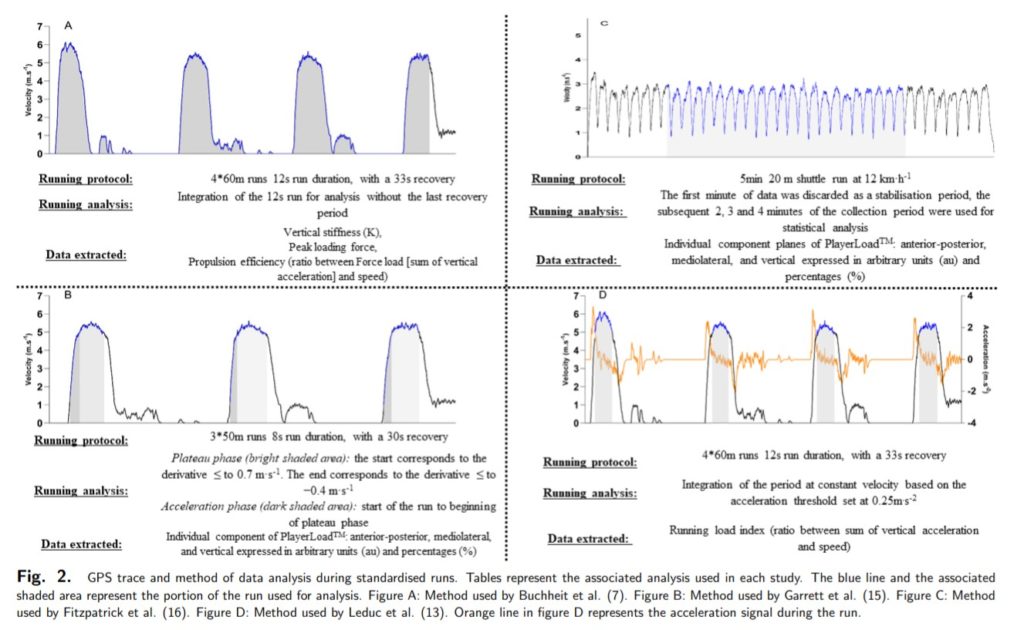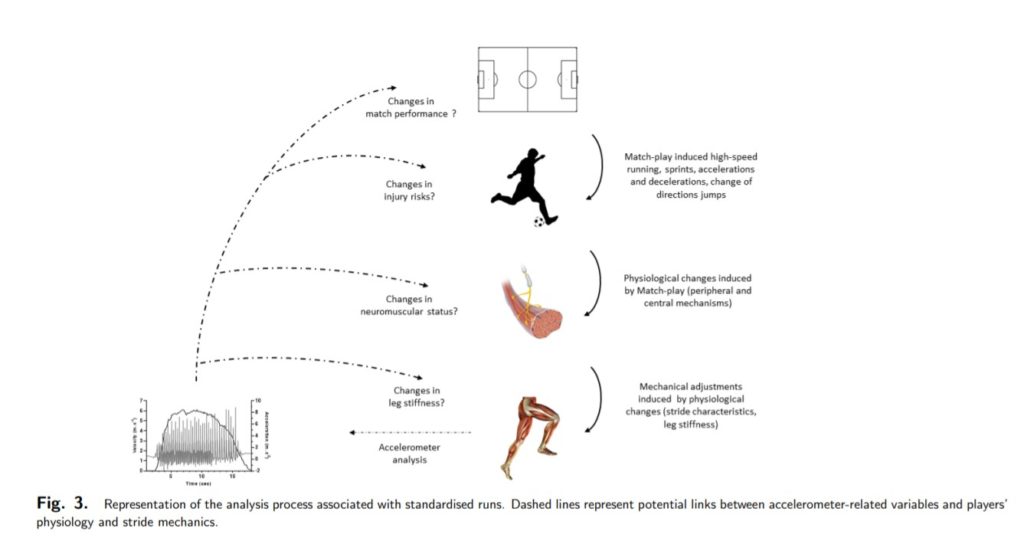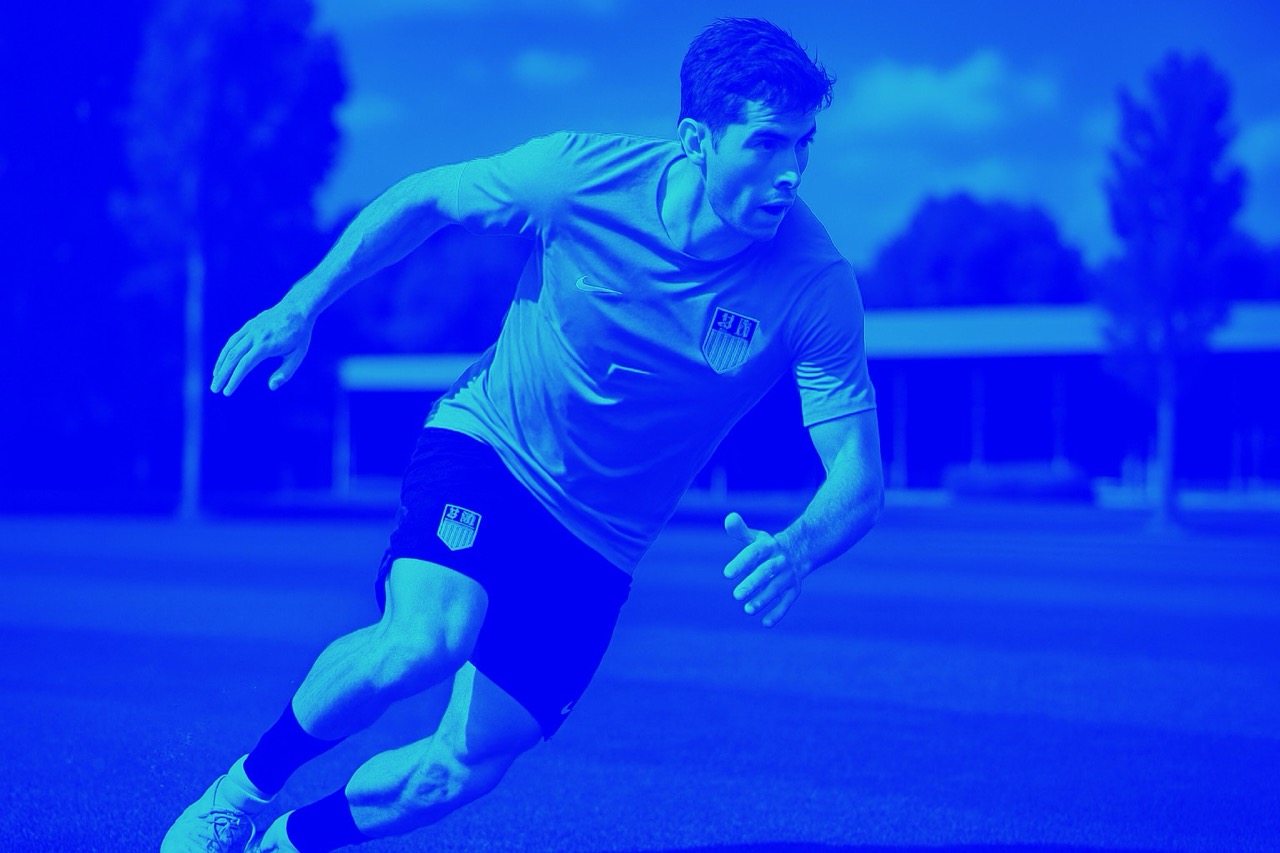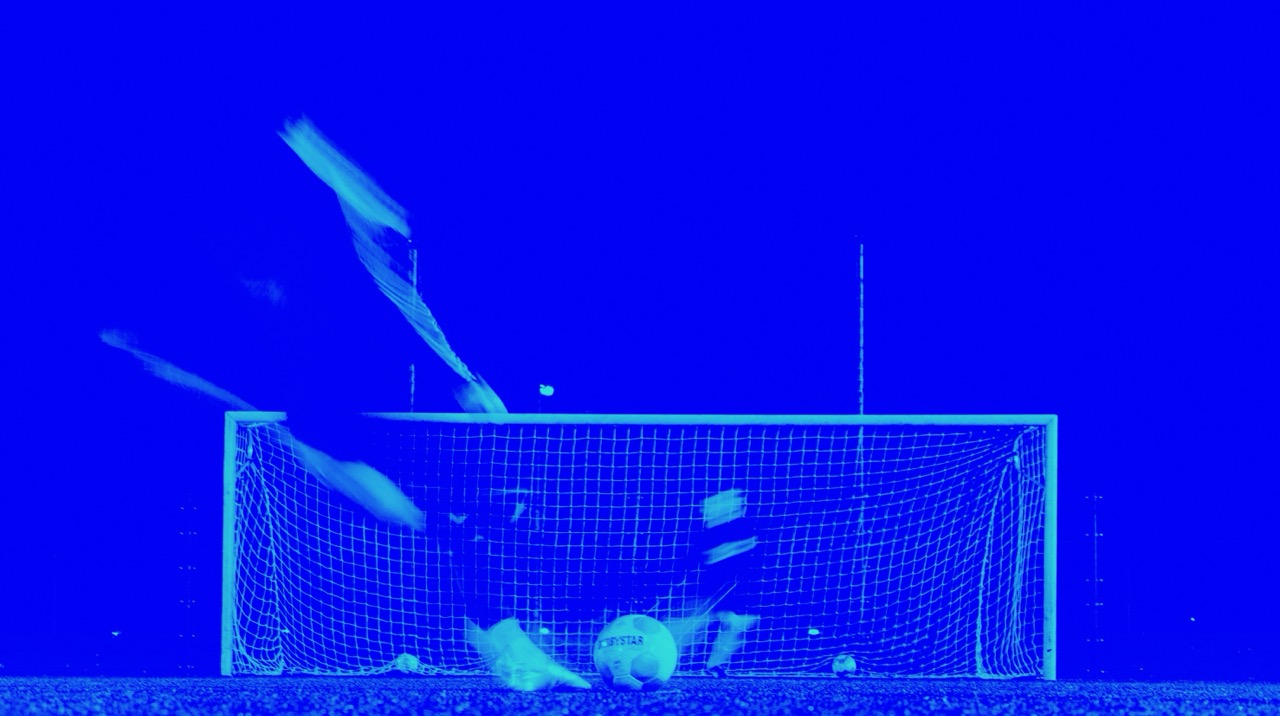The use of standardised runs (and associated data analysis) to monitor neuromuscular status in team sports players: a call to action
Leduc C., Lacome M, and Buchheit M. The use of standardised runs (and associated data analysis) to monitor neuromuscular status in team sports players: a call to action. Sport Perf Sci & Reports,#116, v1.
The increased occurrence of congested fixtures in professional team sports has amplified the need for player monitoring (1). While practitioners need to ensure players’ readiness on a daily basis, match participation results in transient subjective, biochemical, metabolic and neuromuscular perturbations over hours and days (2,3). The current practice is therefore to assess players’ neuromuscular status within 3 days following matches (1), which is aimed at giving practitioners the opportunity to adapt training content at the individual player level and in turn, improve performance and decrease injury risk (4).
The gold standard to measure neuromuscular function is the twitch interpolation technique (5) (Figure 1); this approach is however exclusively of use for research and is unfeasible within the team sport context (6).

In the field, to have a global idea about player’s neuromuscular status, jump variations are often used (e.g. counter movement jump, drop jump, hopping) (4). However, it is worth noting that in team-sports force applications occur mainly horizontally, which suggests that the current (jump) methodology may lack sensitivity to monitor running-based specific neuromuscular status (7). Moreover, several practical challenges remain (e.g. time constraint within the microcycle, logistics, data analysis, testing intensity) making the assessment of neuromuscular status difficult in the context of team-sports.

To overcome those challenges, standardised runs have been proposed as an alternative to jump variations as they can be easily implemented during training sessions on the pitch such as during warm-ups, with all players being tested at once. In fact, some of the accelerometer data collected during these runs have been proposed for the monitoring of neuromuscular status, due to their potential relationship with leg stiffness (8), which is itself affected by fatigue (9).

In this paper, the current methods to assess neuromuscular status using standardised runs (and the associated data analysis) are reviewed, and their possible integration into the programming puzzle is discussed.



